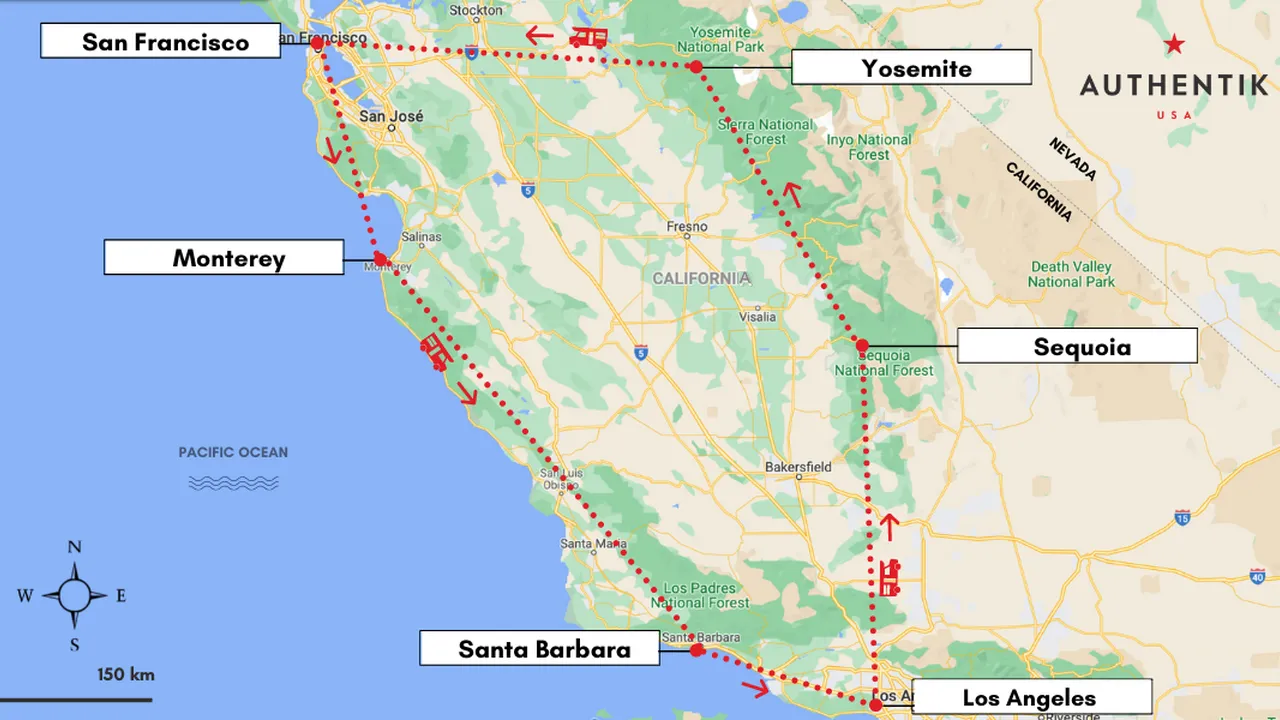7 Essential Items for Desert RV Camping

Understanding Desert RV Camping Challenges and Opportunities
Desert RV camping presents a unique set of challenges and unparalleled opportunities. Unlike traditional campgrounds with lush greenery and readily available water sources, the desert demands careful planning and preparation. The harsh sun, extreme temperatures, and limited resources require a different approach to ensure a safe and enjoyable experience.
However, the rewards are immense. Imagine waking up to breathtaking sunrises over vast, untouched landscapes. Picture yourself stargazing under a canopy of brilliant stars, far removed from city lights. Desert RV camping offers a sense of solitude and connection with nature that is hard to find elsewhere. This section will explore the specific challenges and highlight the incredible opportunities that await you in the desert.
Essential RV Modifications for Desert Camping Adventures
Before embarking on your desert RV adventure, consider these critical modifications to enhance your comfort and safety:
- Enhanced Cooling System: The desert heat can be brutal. Upgrade your RV's air conditioning unit or consider adding a second unit. Look for energy-efficient models to minimize power consumption. Consider a portable evaporative cooler ("swamp cooler") for supplemental cooling, especially in drier desert climates.
- Solar Panel Installation: Power is a precious commodity in the desert. Installing solar panels allows you to generate electricity independently, reducing your reliance on generators and conserving fuel. Calculate your energy needs and choose a solar panel system that can meet those demands. Consider flexible solar panels for easy installation on curved RV roofs.
- Water Storage Capacity: Water is life, especially in the desert. Increase your RV's water storage capacity by adding extra tanks or bladders. Conserve water by taking shorter showers, using water-saving fixtures, and collecting rainwater when possible.
- Tire Pressure Monitoring System (TPMS): Desert roads can be rough and unforgiving. A TPMS alerts you to changes in tire pressure, preventing blowouts and improving fuel efficiency. Look for systems that monitor temperature as well as pressure.
- Window Tinting and Reflective Shades: Reduce heat gain by tinting your RV's windows and using reflective shades. This will help keep the interior cooler and reduce the strain on your air conditioning system. Consider ceramic window tint for maximum heat rejection.
- Skid Plates and Underbody Protection: Protect your RV's undercarriage from rocks and debris with skid plates. This is especially important if you plan on venturing off-road. Consider adding rock guards to protect your holding tanks.
Top RV Air Conditioner Units for Desert Heat Survival
Choosing the right RV air conditioner is crucial for staying comfortable in the desert. Here are a few top contenders, along with their pros, cons, and pricing:
- Dometic Brisk II: A popular choice known for its affordability and decent cooling power. Pros: Relatively inexpensive, easy to install, widely available. Cons: Can be noisy, less energy-efficient than other options. Pricing: $600-$800.
- Coleman Mach 8 Plus: A more powerful and efficient option compared to the Brisk II. Pros: Strong cooling capacity, quieter operation, improved energy efficiency. Cons: Higher price point. Pricing: $800-$1000.
- RecPro RV Air Conditioner: Offers a balance of performance and affordability. Pros: Good cooling power, relatively quiet, sleek design. Cons: May require professional installation. Pricing: $700-$900.
- Rooftop AC Units with Heat Pumps: Offer both cooling and heating capabilities, making them versatile for different desert climates. Consider brands like Houghton and Advent. Pros: Year-round climate control, energy-efficient heating option. Cons: Higher initial cost. Pricing: $1000+.
Solar Power Options for Off-Grid Desert RVing
Harnessing the sun's energy is essential for off-grid desert RVing. Here's a breakdown of solar panel options and related equipment:
- Solar Panels: Choose between monocrystalline, polycrystalline, and thin-film solar panels. Monocrystalline panels are the most efficient but also the most expensive. Polycrystalline panels offer a good balance of performance and cost. Thin-film panels are lightweight and flexible but less efficient. Consider brands like Renogy, Go Power!, and Zamp Solar.
- Charge Controller: Regulates the flow of electricity from the solar panels to the batteries, preventing overcharging and extending battery life. MPPT (Maximum Power Point Tracking) charge controllers are more efficient than PWM (Pulse Width Modulation) charge controllers.
- Batteries: Store the energy generated by the solar panels. Deep-cycle batteries are designed to be discharged and recharged repeatedly. Lithium-ion batteries offer superior performance and lifespan compared to lead-acid batteries but are more expensive. Consider brands like Battle Born Batteries and Victron Energy.
- Inverter: Converts DC (Direct Current) electricity from the batteries to AC (Alternating Current) electricity, which is required to power most appliances. Choose an inverter with enough wattage to handle your peak power demands.
- Wiring and Mounting Hardware: Use high-quality wiring and mounting hardware to ensure a safe and reliable solar power system.
Water Conservation Strategies for Desert RV Adventures
Water is a precious resource in the desert. Implement these strategies to conserve water during your RV adventures:
- Take Navy Showers: Wet yourself, turn off the water while you soap up, and then rinse quickly.
- Use Water-Saving Fixtures: Install low-flow showerheads and faucets.
- Collect Rainwater: Set up a system to collect rainwater for non-potable uses like flushing toilets.
- Use Biodegradable Soap: This minimizes the impact on the environment if you need to dispose of greywater.
- Wash Dishes Efficiently: Use a minimum amount of water for washing and rinsing dishes. Consider using disposable plates and utensils for some meals.
- Avoid Washing Your RV: Unless absolutely necessary, avoid washing your RV in the desert. If you must wash it, use a waterless RV wash product.
- Monitor Water Levels: Regularly check your water tank levels to avoid running out of water unexpectedly.
Choosing the Right RV Tires for Desert Terrain
The tires on your RV play a crucial role in safety and performance, especially in the harsh desert environment. Consider these factors when choosing tires:
- Load Capacity: Ensure your tires have a load capacity that is sufficient for the weight of your RV.
- Tire Pressure: Maintain proper tire pressure to prevent blowouts and improve fuel efficiency. Use a TPMS to monitor tire pressure in real-time.
- Tread Pattern: Choose a tire with a tread pattern that is suitable for the terrain you will be driving on. All-terrain tires offer a good balance of on-road and off-road performance.
- Sidewall Strength: Reinforced sidewalls can help protect against punctures and damage from rocks and debris.
- Heat Resistance: The desert heat can put extra stress on tires. Choose tires that are designed to withstand high temperatures.
- Consider brands like Michelin, Goodyear, and BFGoodrich: These brands offer a range of RV tires that are suitable for desert conditions.
Desert RV Camping Safety Precautions You Must Know
Safety should be your top priority when RV camping in the desert. Take these precautions to minimize risks:
- Stay Hydrated: Drink plenty of water throughout the day, even if you don't feel thirsty.
- Protect Yourself from the Sun: Wear sunscreen, a hat, and sunglasses. Seek shade during the hottest part of the day.
- Be Aware of Wildlife: The desert is home to a variety of wildlife, including snakes, scorpions, and spiders. Be cautious and avoid approaching or handling wild animals.
- Carry a First-Aid Kit: Include items for treating sunburn, insect bites, and minor injuries.
- Tell Someone Your Plans: Let someone know your itinerary and expected return date.
- Check the Weather Forecast: Be aware of potential weather hazards such as flash floods and dust storms.
- Carry a Satellite Communication Device: Cell phone service may be unreliable in remote desert areas. A satellite phone or satellite messenger can be a lifesaver in an emergency. Consider devices like Garmin inReach or SPOT.
- Learn Basic Desert Survival Skills: Knowing how to find water, build a shelter, and signal for help can be crucial in a survival situation.
Desert RV Camping Gear Recommendations and Reviews
Having the right gear can make all the difference in your desert RV camping experience. Here are some recommended items and reviews:
- Portable Water Filter: Essential for purifying water from questionable sources. Consider brands like Sawyer and LifeStraw.
- Portable Air Compressor: Useful for inflating tires and other equipment. Look for models with a built-in pressure gauge.
- Shovel and Recovery Boards: Essential for getting unstuck if you get bogged down in sand or mud. Brands like MaxTrax are popular.
- Navigation System: A GPS unit or smartphone app with offline maps is crucial for navigating in remote desert areas. Consider apps like Gaia GPS or OnX Offroad.
- Binoculars: For wildlife viewing and stargazing.
- Camp Chairs and Table: For comfortable outdoor seating and dining.
- Headlamps and Flashlights: Essential for navigating around your campsite at night.
- Dutch Oven: For cooking delicious meals over a campfire.
Finding the Best Desert RV Camping Locations
The desert offers a wide range of RV camping locations, from established campgrounds to dispersed camping areas. Here are some popular options:
- National Parks: Many national parks in the Southwest offer RV camping, including Death Valley, Joshua Tree, and Big Bend. Reservations are often required.
- Bureau of Land Management (BLM) Land: The BLM manages millions of acres of public land that are open to dispersed camping. Dispersed camping is typically free but may have restrictions.
- State Parks: State parks often offer RV camping with amenities such as restrooms, showers, and hookups.
- Private RV Parks: Private RV parks provide a variety of amenities and services, but they can be more expensive than other options.
- Research online resources like Campendium, Freecampsites.net, and Allstays: These websites provide information on campgrounds, dispersed camping areas, and RV parks.
Desert RV Camping Meal Planning and Cooking Tips
Planning your meals ahead of time is essential for desert RV camping, as grocery stores may be scarce. Here are some tips for meal planning and cooking:
- Plan Meals in Advance: Create a meal plan for your entire trip and pack all the necessary ingredients.
- Choose Non-Perishable Foods: Focus on non-perishable items such as canned goods, dried fruits, nuts, and pasta.
- Use a Cooler with Ice or Ice Packs: Keep perishable foods cold in a cooler.
- Cook Over a Campfire or Portable Grill: Conserve propane by cooking over a campfire or portable grill.
- Use a Dutch Oven: A Dutch oven is a versatile cooking tool that can be used to bake, roast, and stew.
- Prepare Meals in Advance: Consider preparing some meals in advance and freezing them for easy reheating.
- Conserve Water When Washing Dishes: Use a minimum amount of water for washing and rinsing dishes.
Dealing with Desert Weather Conditions in Your RV
The desert weather can be unpredictable and extreme. Be prepared for a variety of conditions:
- Extreme Heat: Take steps to stay cool, such as using air conditioning, drinking plenty of water, and seeking shade.
- Flash Floods: Be aware of the risk of flash floods, especially during monsoon season. Avoid camping in washes or low-lying areas.
- Dust Storms: Dust storms can reduce visibility and cause respiratory problems. Close your windows and doors and stay indoors during dust storms.
- Cold Nights: The desert can get surprisingly cold at night. Bring warm clothing and bedding.
- Strong Winds: Secure your awning and other outdoor equipment to prevent damage from strong winds.
- Monitor the Weather Forecast: Stay informed about potential weather hazards by checking the weather forecast regularly.
:max_bytes(150000):strip_icc()/277019-baked-pork-chops-with-cream-of-mushroom-soup-DDMFS-beauty-4x3-BG-7505-5762b731cf30447d9cbbbbbf387beafa.jpg)





